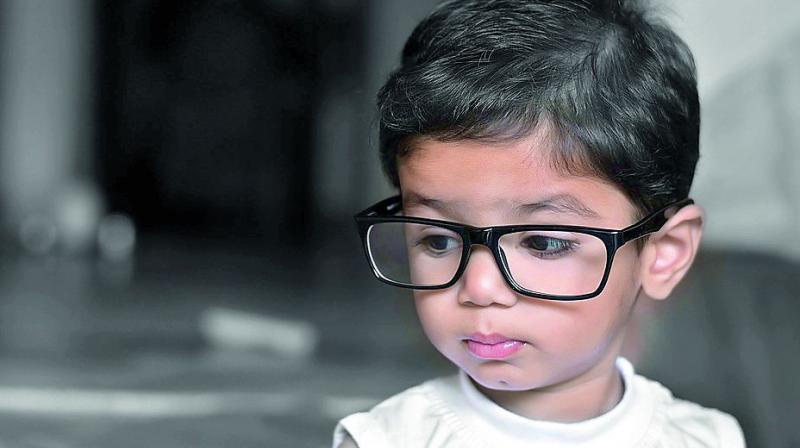Vision for a better tomorrow

Blindness in children below 16 years of age occurs due to various reasons like myopia, hyperopia, astigmatism, squint, childhood cataract and cancer. Often, these diseases are not identified at an early stage and it is too late by the time the child is brought to the hospital by the parents, adding to the burden of blind people in the country. India has about 407 million children below the age of 16 years, which accounts for 40 per cent of the country’s population. The prevalence of blindness in children is 0.5/1000, which means there are approximately 2 lakh severely visually impaired children in India. However, the right to good sight is the right of every child, states pediatric ophthalmologist Dr Ramesh Kekunnaya of L.V. Prasad Eye Institute.
Q. What is the main reason for visual impairment among children below 16?
Refractive error or myopia, hyperopia, astigmatism, childhood cataract, squint/strabismus or eye movement disorders, childhood glaucoma, cancer, retinopathy of prematurity, CVI in premature kids and whole eye deformities.
Q. Is eye testing for children still not done regularly, despite the existence of so many camps and health check-up drives conducted by various NGOs?
Yes, the main focus of eye screening programmes continues to be on adults, mainly to detect cataract. Screening for preschool children is rarely done. Early detection is crucial for the success of treatment in children. Even if some eye diseases are detected in children, eye doctors who take care of children are sparse and poor families cannot afford to go to district headquarters or big cities to get proper treatment or surgery.
Q. Which category of children are still ignored during check-ups? Is there a need for a targeted programme in their case?
Newborns, premature kids and preschool children are often missed, which is why the need of the hour is training teachers, anganwadi workers, village volunteers and even paediatricians.
Q. Why does severe vision loss or strabismus occur? Why is it difficult to address this problem?
Firstly, the reasons for severe vision loss are: pediatric cataract, retinal pathologies, optic nerve problems, CVI or brain problems, eye globe deformities, corneal opacities, glaucoma, etc. On the other hand, strabismus or squint can be caused by hyperopia, muscle weakness or paralysis, due to brain problems and genetic defects. In the majority of the cases, there is no specific aetiology or reason. Most of these are genetically predetermined or caused due to infections which are difficult to treat except in a few cases.
Q. What are the problems at the ground level? Is a lack of ophthalmologists at primary health care centres leading to an increase in the number of child patients?
The following are the problems at the ground level: Lack of health education and awareness, lack of manpower and screening, lack of a linkage at the primary, secondary and tertiary levels, focused screening (universal screening), expensive instruments and infrastructure. Also, most surgeries in children are performed under general anaesthesia, which is not possible in rural areas. However, the mere presence of doctors at the primary healthcare level will not help. There has to be a team to handle the cases. We have often seen that despite giving references to patients’ families, they do not take the child immediately to a tertiary care centre. They wait and this leads to further delay and deterioration. There is a need to understand that eyesight is precious and the focus of the medical fraternity is to work towards saving the vision of the child.
What is Amblyopia?
Amblyopia, also known as lazy eye is a vision development disorder in infants and children in which an eye fails to achieve normal vision even with full prescription glasses or contact lenses. There are multiple causes of amblyopia including refractive errors (glasses), crossed eyes or squinting, cataracts in childhood and corneal/retinal diseases. Amblyopia begins in infancy or early childhood and in most cases, only one eye is affected but if left untreated, it can cause severe visual disability in the affected eye. It is important to consult a paediatric ophthalmologist at the earliest.
According to the World Health Organization, in 2014, the prevalence of amblyopia across the globe is approximately 1-5 per cent of the total population. It was estimated that over 19 million children aged less than 15 years were visually impaired, out of which 12 million are impaired due to uncorrected refractive errors and amblyopia. Early detection and treatment is the

